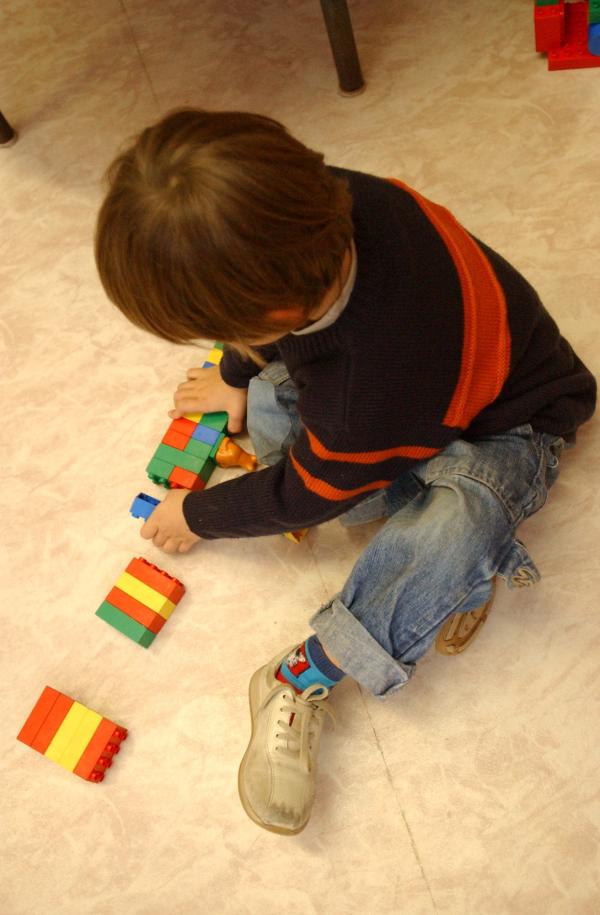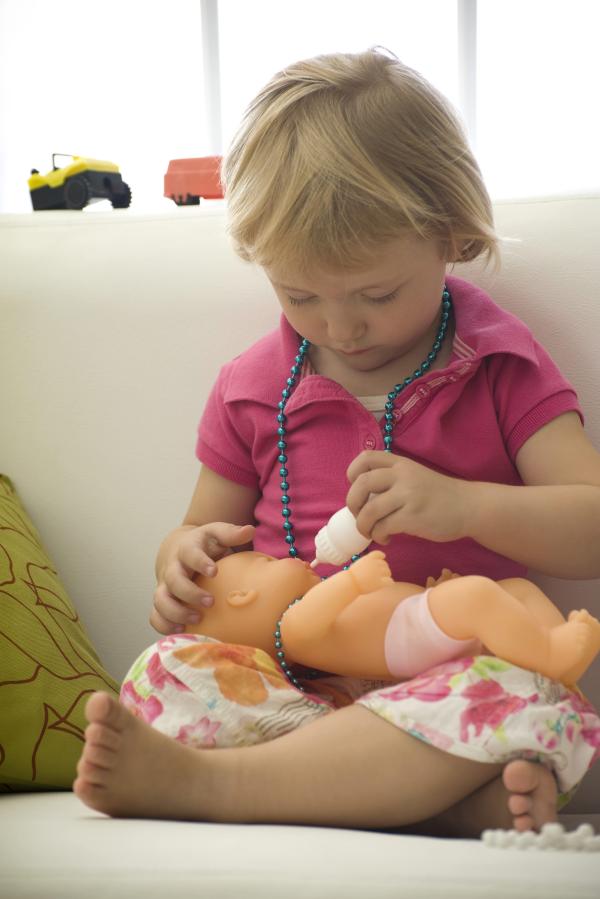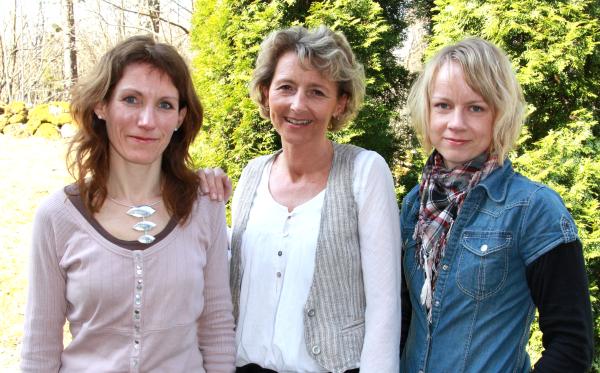"Many kindergartens have a separate room for Lego and other construction toys, and in interviews with the directors we hear that 'the children are so keen on playing with Lego.' But when we walked around the kindergarten with the children, it was the boys who took us into the construction room and showed us what they had made," explains Line Rønning Føsker.
"In contrast, the girls draw and play with dolls. When we asked why they didn’t play in the construction room, some of them explicitly used gender as the reason: no, we do girls’ stuff. Others displayed little self-confidence in this area and said that they weren’t good at building," adds her colleague Solveig Østrem.

Gender equality in the framework plan
The two researchers, along with Hilde Dehnæs Hogsnes and four other colleagues, have written a report at the request of the Norwegian Ministry of Education and Research that evaluates how the Government’s framework plan for the content and tasks of kindergartens has been introduced, used and perceived. A new framework plan for kindergartens came into force on 1 August 2006, and places gender equality high on the agenda. Gender equality is both described as a specific theme that the kindergartens should work with when focusing on local community and society, and as something that should be mainstreamed in the overall pedagogical approach. Specifically, the framework plan states that kindergartens must ensure that both boys and girls participate in all types of activities.
The researchers interviewed county governors and those responsible for kindergartens in the municipalities, as well as kindergarten directors, other kindergarten employees, and parents. The absence of commitment to gender issues and gender equality among the children was evident at all levels. Even the researchers did not focus on gender as the basis for their study. However, when they interviewed the children, they saw how distinct the gender boundaries were, and as a result became more aware of what was not discussed in the interviews with the adults.
"The boys draw, make bead jewellery and play with dolls. We don’t find them not doing something because it is an activity for girls. It seems that it is the girls who set the strictest parameters for what they are 'allowed' to do!" explains Østrem.
The girls lose out

In today’s climate, where it is often claimed that boys are the losers in a feminine kindergarten and school environment, it is not so easy to get the message across that the girls are the ones who lose out, the researchers believe. But the girls miss something important by not playing with building blocks.
"There is an increasing focus on mathematics education beginning in kindergarten, and building and construction toys are vital tools for learning about form and space," explains Rønning Føsker.
When girls do not participate in this, they fall behind already in kindergarten with regard to mathematics education in school.
Right to co-participation
Children’s right to co-participation is a prioritized area in the framework plan. Many kindergarten employees perceive this to be a challenging topic, but a great deal of effort is devoted to achieving it. The researchers are worried that this will allow gender stereotypes to gain the upper hand.
"For the adults, gender is a non-issue. Instead they talk about the qualities of the individual child and that children have the right to make individual choices," says Østrem.
"Kindergartens provide construction materials for the children, but they do not ensure that these are used, as stipulated by the framework plan. Major changes are not necessary – by making small adjustments everyone will be ensured access to opportunities," Rønning Føsker believes.
And when girls choose not to play with Lego, perhaps it is not individual choice but other forces that prevail.
"The Lego industry is extremely gender biased, and clearly targeted toward boys. Lego toys for girls are pink and not made to build with, whereas Lego for boys focuses on advanced construction. When kindergartens leave the use of construction toys up to the child, they also leave it up to the toy industry," Østrem points out.
"Girls are socially oriented"
"Another thing the children made us aware of was the relationship between the younger and older children. In kindergartens with younger and older children in the same group, or open kindergartens, we heard a lot of negative comments from the older children about the younger ones – the young children are noisy, ruin the game, and smell bad. And it was always girls who made these comments," explains Østrem. In contrast, the adults spoke favourably about multi-age groups, saying that the younger and older children enjoy each other’s company.

"It is easy to conclude that the older girls’ negative perception of the younger children results from expectations that they must be the caregivers," Østrem believes.
A common belief is that boys are interested in objects and girls are concerned with relationships. According to the researchers, this becomes a self-fulfilling prophecy because the girls receive feedback as if they are relationally oriented whereas boys are encouraged to focus on things.
The researchers also believe this is illustrated by the perception that when girls seek out contact with adults in connection with an activity they are doing, they are using the activity to gain attention. In contrast, the noisy games boys play are not interpreted as a ploy to gain attention.
Why is gender equality not promoted in kindergartens?
The researchers find that kindergartens generally put the least amount of effort into topics and areas of the framework plan that they perceive as challenging. This is the natural result of a hectic day in the kindergarten, and gender equality is one of the areas perceived to be difficult. But when those responsible for implementing the framework plan report that there is a need for competency development in other challenging areas, gender equality is never one of these – the topic is simply not mentioned.
"Maybe the reason is that the topic is seen as politically sensitive and is therefore neglected. In one kindergarten we visited, the staff had tried to divide the group into boys and girls for certain periods because they found that the boys took control and they wanted the girls to be able to express themselves. But when the parents reacted negatively, the staff just gave up," explains Dehnæs Hogsnes.
Nonetheless, the Ministry of Education and Research has published 10 topic-specific brochures on new, challenging areas in kindergartens, and one of these addresses gender equality. In other words, there is no lack of specific advice on how to proceed.
"To counteract the attitude that 'we look at personality, not gender', we also need to become more aware of how we do gender," says Dehnæs Hogsnes. She emphasizes that this concerns not only how children choose toys based on gender patterns, but also how both women and men in kindergartens help reproduce rather than break down gender boundaries.

Unpopular findings
The researchers have a feeling that this is not what the Ministry wanted to read in the report.
"Our report came two days after another report that, among other things, concluded that yippee, there are more men working in kindergartens! This seems to have gotten a more positive reception. When ministries talk about our report, it is not gender equality they focus on," says Østrem.
"Employing more men is the only gender equality measure being used in kindergartens," says Solveig Østrem.
Dehnæs Hogsnes agrees:
"Gender equality prizes for kindergartens are awarded exclusively on the basis of the number of male employees, not on how gender equality is addressed in general in the kindergarten. But there are no studies about men in kindergartens showing that employing more men increases gender equality among the children. It seems there is a belief that this happens by itself, but the result could just as well be that gender stereotypes are strengthened."
The researchers stress that they are of course not opposed to efforts to hire more men in kindergartens. This is an excellent gender equality measure – for adults. It is important to be aware, though, that this is not a miracle cure for creating gender equality within groups of children.
– Then the conclusion is that gender equality efforts targeted toward children have come to a halt at all stages?
"Yes. The framework plan is clear as a steering document, but at the level of the children themselves it is obvious that nothing is happening. When you piece it all together, it is clear why this is the case," Østrem concludes.
Translated by Connie Stultz
Solveig Østrem is an associate professor, and Line Rønning Føsker and Hilde Dehnæs Hogsnes are assistant professors at the Centre for Early Childhood Education, Department of Teacher Training (Barnehagesenteret, Avdeling for lærerutdanning), Vestfold University College.
The research group at the Centre for Early Childhood Education (Barnehagesenteret) at Vestfold University College was commissioned by the Ministry of Education and Research to investigate how the Government’s framework plan for the content and tasks of kindergartens has been introduced, used and perceived.
The evaluation consists of two quantitative and four qualitative studies of stakeholders and user groups affected by the framework plan: children, parents, kindergarten teachers, assistants, directors, kindergarten authorities in the municipality, and the public administration.
